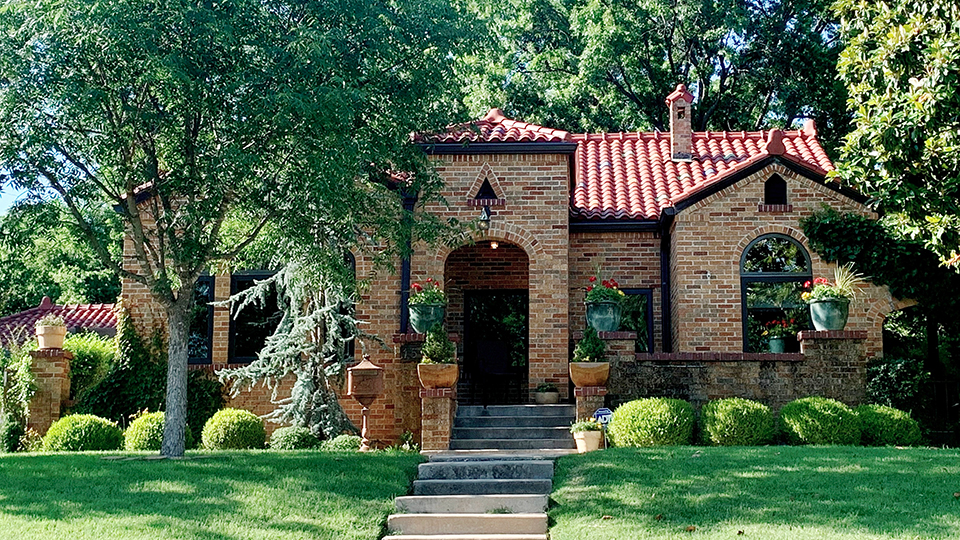
Photo: Turner House, circa 1915, built by Opie and Waco Turner, located a 1501 3rd Avenue SW. Listed on the National Register of Historic Places in 2013. Image by wikipedia username:OKJaguar, 2020, creative commons [cc‑4.0], accessed April, 2025.
Ardmore City Hall is located at 23 South Washington Street, Ardmore, OK 73401.
Phone: 580‑226‑2100.

Photo: Turner House, circa 1915, built by Opie and Waco Turner, located a 1501 3rd Avenue SW. Listed on the National Register of Historic Places in 2013. Image by wikipedia username:OKJaguar, 2020, creative commons [cc‑4.0], accessed April, 2025.
Neighborhoods
Beginnings [1, 2]
When Ardmore was founded it was named by an official of the railroad in honor of the Philadelphia suburb he had known, though the young settlement had little of the beauty of its namesake. [Ardmore is a place name and zip code (19003) and residential neighborhood (see Ardmore Neighborhood, in Lower Merion Township, Montgomery County, PA.]
The town was established in 1887 as a railroad station when the tracks were laid for the Santa Fe Railway, which was the first railroad through the central part of the Indian Territory, connecting Texas with Kansas. [Ardmore was incorporated in 1899.] The railroad replaced the cattle trails and wagon roads with faster, more efficient transportation for the cattle and cotton going to eastern markets. Prior to statehood in 1907, Ardmore became the largest inland cotton center in the United States, shipping an average of 25,000 bales of cotton annually by rail, helping insure the commercial viability of the town. In 1890, the importance of Ardmore expanded further when the first federal district court inside Indian Territory was established in Ardmore. After statehood, the town's role as a governmental center continued when it became the county seat of Carter County. The discovery of the Healdton Oil Field nearby in 1911 led to an economic boom for the town as a railhead for much of oil and gas from the field.
In 1895, following a fire that destroyed 131 businesses in Ardmore, the town had rebuilt, widening Main Street and replacing wooden structures with the more fire resistant, substantial, one to three story, brick and stone buildings that still form the core of the central business district. On September 27, 1915, cashinghead gas leaking from a tank car sitting near the depot exploded, killing fifty people, injuring hundreds more, and damaging many of the buildings in the central business district. When the damage was assessed, much of the district east of the tracks had been destroyed, but most of the businesses west of the depot survived. As a result, by 1918 the central business district had shifted west of the tracks and the dominant appearance of the extant business district along Main Street had been established.